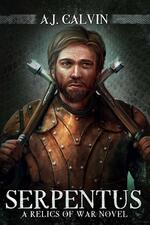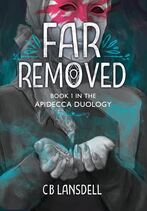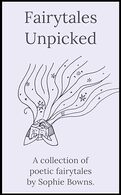|
A fun read, plenty of action and intriguing, growing, characters.
The plot is a classic of fantasy where one god leads his minions to try to take over the mortal lands of the followers of the other gods. They, in turn, rally their minions and there is an epic battle. However, the twist is in what happens to our main character, Owen. He starts on the “good” side, is captured, placed in a kind of neutral servitude, then forced to join the “evil” side, before finally being rescued, but forever changed. We are carried through this story with Owen and a fascinating array of secondary characters, some sympathetic and some hostile. Foremost is Aj’ana, a Murkor (amazing society – well done!) who takes Owen under her wing while he’s in servitude and, through their interactions, teaches him things about himself and others. Tessamir is not only Owen’s love interest but a powerful multi-dimensional character on her own. She brings an interesting backstory and is a strong foil against which to play Owen’s growth as well as his weaknesses and strengths. There are others, including battle leaders and people who are unhinged by the changes and challenges they are forced to undergo. Each character presents Owen opportunities and difficulties which he (and Tess) must work through, presenting a fresh retelling of the good versus evil war trope. Oh, and there is a lot of action! Serpentus is a stand-alone novel in the Relics of War universe. Highly recommended!
0 Comments
I loved this book.
It has so much that is fresh and different which the author uses consistently as driving forces in the novel. Knyadrea is a moon world, part of a two-moon system with a complex “seasonal” structure between the moons, planet (uninhabited), and the sun. The author never forgets to place us in the right season and all the pros and cons, to the characters, of that season. The Knyads (the sentient species) have a unique multi-part life cycle. This affects their individual outlooks and gives each of them depth as they share their stories. They are also both familiarly human and sharply distinguished. Their skin is multi-hued, for example and they lack hair but have colorful tendrils. Society is also unique. Knyadrea is divided into clans. These clans are then stratified into Orta, Praemor, and Erud. The five Erud clans rule Knyadrea with a despotic, paranoid fist. There is also a large group of knyads who are unclassified, the lowest of the low. Our main characters, Oklas and Prismer, are multi-dimensional and each carry their struggles, successes, and failures to us, the readers, in a way which pulls us deeper into the story and finds us hoping for their success. Secondary characters also have depth. They are deftly used to give us more information – about the culture, the life cycle, the politics, the seasons, the history, and the main characters themselves. In short, Far Removed is a well-done, unique, intriguing, and engaging story. I cannot wait for its companion volume, the conclusion to the Apideccan Duology! Better and Better!
Ms. Bowns’ fairy tale retellings keep getting better and better. My favorites in this collection were the first story – The Upper Hand – the last – The Pot That Wouldn’t Stop – and one in the middle - Frog the Inventor. This is not to say the others (there are 12 fairy tale retellings in all) were not good, they are! But I connected especially with those three. Ms. Bowns’ has converted fairy tales, some more familiar and some less, from their original into rhyme. Then she has added one or more twists making each story both familiar and new. For example, The Upper Hand is a retelling of the Emperor’s New Clothes but, in Ms. Bowns’ retelling the joke is on the clothiers and the Prince (yes, downgraded from Emperor!) definitely has the upper hand. As with her other collections, my biggest difficulty was the dearth of my knowledge of some of the originals. This, of course, meant the twist was lost until I could find and read the original. However, the stories do stand on their own; they are witty and quick and enjoyable. Fairy tales, verse, variety, and short, easy, funny read. Recommended! You think you know your fairytales? Sophie Bowns takes 12 classic tales and retells them with new turns and twists, all while putting them to verse!
Some follow the originals (as I remember them) pretty closely, the big change being the transfer to verse – Rumpelstiltskin and the Shoemaker and the Elves. But others take the familiar tales down new paths. All are good but my particular favorites are her dark retelling of the Little Mermaid, a flight-filled retelling of the Happy Prince, and her Not So Snow White. This is an excellent short read. Recommended! I loved it!
The characters have depth and you, as the reader, feel their tragedy and their triumph. Calvin handles the range of emotions equally well - love and fury, happiness and distress. I find the world interesting in that Calvin has built her story around old laws and conservative intransigence. “Everybody knows” this will be bad, but the law says… Then what will the protagonists do – come out of hiding and find who they really are! That is truly the core of the story – who are you behind your façade. At least in my opinion – that is where I found the tension. It is a journey on which we follow the main character, Andrew. At each step he learns something new he faces the question of do I share this? Does it become part of my public appearance, or do I keep it hidden. The one nit I have with the story is that Calvin gets repetitive on the central interaction between Andrew and his brother Alexander. In my opinion there could be fewer reminders that Andrew sees himself as Alexander’s protector. But, like I said, this is a minor nit in an excellent story. The pace is excellent, the writing is crisp, the result is quite enjoyable. Very much looking forward to Guardian, the next book in the Caein Legacy series. An excellent read! K. E. Andrews weaves a gripping tale with layers of secrets against a sweeping tableau. Magic is fading. Does the war Malik Sethos wages have anything to do with it?
The characters are multi-dimensional and interesting, each with their own secrets, personal demons, and desires. The Prince, Raneses, his friend and the captain of the Guard, Uriah, and, most especially the eponymous assassin, Serein. Skillfully woven are a cast of seco9ndary characters each with personality, some likeable and some not. Each character reveals something of the others they come in contact with - revealing secrets or adding layers to the ones we know. I espcially likes the way Andrews tells the tale of Serein's "Sun and Stars" and the white voice who refers to her as "volchitsa". These two subplots, secrets of Serein's, are skillfully done and surprising in their final revelation. The only negative is that the glossary provided at the front was needed by this reader as I was not familiar with a lot of the articles of clothing or architectural features as these were drawn (again with deftness) from a culture I am less familiar with. But after a while I knew what a riad or a qamis or a keffiyeh was. Heartily recommended. I cannot wait for the sequel! A delight! Elyse Hart has taken an intriguing concept and made it into a fantastic, wonderful, marvelous poetry and photo book. I received an ARC copy of the book in exchange for an honest review.
In 29 poems she paints lyrical pictures of 29 people based on four photographs. The poems are each unique, speaking with a voice that matches the person one can imagine from the photographs. Is it a true representation? I will never know but Elyse’s artistry makes me, as the reader, think I know them, which, in my mind, is even better! The pictures shared by the 29 “subjects” are stunning in and of themselves, but it is the poetry that weaves the story. Connects the pictures to the person. Connects the people to each other. Connects the reader to them all. Poems for Squares will be available March 15 and is highly recommended. Visit https://www.elysehart.com/poemsforsquares for more information and to order your own copy. This is really two pairs of connected steampunk stories. The first two center around Jacques Charlay and his store, A Ticking Clockwork. The second two deal with steampunk nuns and monks on a quest.
The stories are fast-paced and full of the gadgetry one expects in the genre. The first pair, where steam and mechanics interact with time is a fascinating tour. Don’t think too deeply just let the fantastical sweep over you. The best part is the description of how Mr. Charlay’s workshop is really, for lack of better terms, a clock that is so efficient it saves time. Our narrator is an engineer who has the wonderment of a student discovering new things to build on what he already knows. You feel, along with him, those exciting moments of, “Really? I never knew that!” The second pair is a unique twist on a crime story. There are gadgets, of course, from the TOD (Tesla Oscillator Device) to the Keeper’s Urn, and many others, small and large. The unique twist is that the crime is stealing an old-fashioned scroll and the people tasked with its retrieval are a bunch of classical monks, robes and all, and four nuns who are a bit more classical steam-punk. These two tales seem a bit more rushed; a bit less polished than the first pair. However the story moves along at a fast clip and is full of ingenious magic (touched with belief) and plenty of gadgets! There is the sharp edge of creativity but the characters do not take the time to develop. If you like steam punk with a twist, especially time-bending steampunk, these stories are recommended! K. M. Warfield has created an enjoyable fast-paced, tightly crafted high fantasy story. Magic abounds and the gods frequently come to visit our protagonists – a group of five adventurers who carry the fate of Avoch with them.
The novel weaves several threads deftly from start to finish. There is prejudice and coming of age and finding and building dear friendships. There is the duality of life – one’s private self and the public face we often have to put on for others. All of this is done with a light hand that makes the reader grow with the characters; and despise those that fail to advance. Religion is also a theme. Avoch is polytheistic and the gods often come visit our characters, to give advice, education, and tools. All of them also demand, in return, devotion and service. Again, this part of the world is dealt with matter-of-factly and lightly; the reader feels no proselytizing or pedantry. Avoch has more magic than I have ever seen in high fantasy. All our adventurers can wield it. There are magical rooms and traps and devices. Of course, the gods have abundant magic. Finally, so do all the primary villains. Drogon has a machine in the first half that is simply a brilliant creation by Ms. Warfield! I do have two minor complaints. One, there be no dragons. In actuality, there are very few “monsters” that are not humanoid. Second, there are small leaps in time. At one point the group decides to head for some caves to shelter. The next paragraph Thia is waking up in the cave. Neither of these detracts from the story. K. M. Warfield’s Scales and Stingers is highly recommended! Available for pre-order now. Available in stores and on-line March 14. The Last Stone is an enchanting tale with startling but enjoyable twists on several elements of fantasy stories. Elves? Check, but no pointy ears or amazing prowess with a long bow. Dwarves? Check, but no gnarled faces encased in gray beards toiling deep underground. Magic? Check but with a marvelously refreshing form of “gifts” discovered over time and mastered with practice. As interesting, to me, that this magic is the domain only of nymphs, male and female, who otherwise resemble everyone else! Evil King? Check, but with a very interesting psychological profile the reader only gets to see through the eyes (and the recollections) of those around our protagonist.
Finally, we have Amidale Stone. The Last Stone. Again, she is a common archetype – young, unknowing of her powers when we meet her, but prophesied to save the world of Karne. But she is not an archetype. She speaks to the reader and, as readers, we get to experience her frustrations, the unfairness of her situation, and her pain of loss. The Last Stone is but an introduction to Amidale, to Karne, and to the battle unfolding between the plucky protagonist and the Evil King, Alaric. I look forward to the next book in the series! |
AuthorMe as a critic (be careful! the harshness will be well concealed!) Archives
April 2024
Categories
All
|










 RSS Feed
RSS Feed